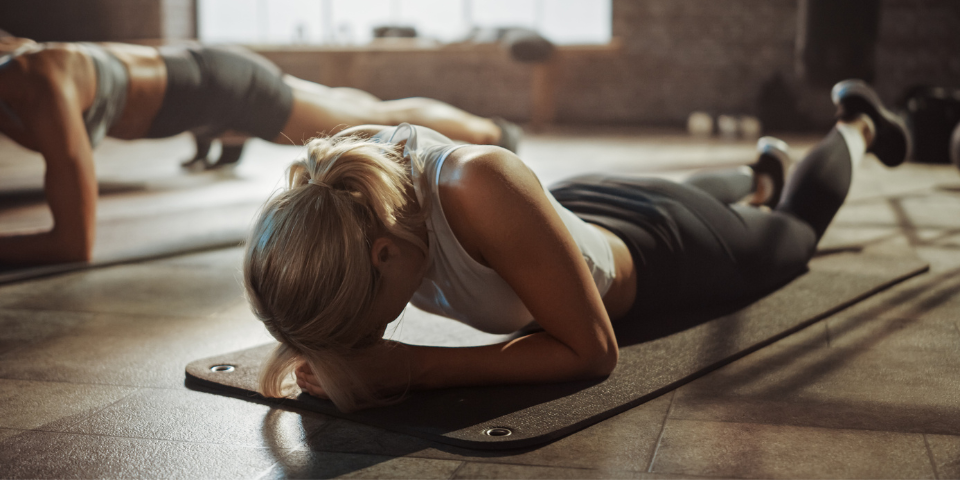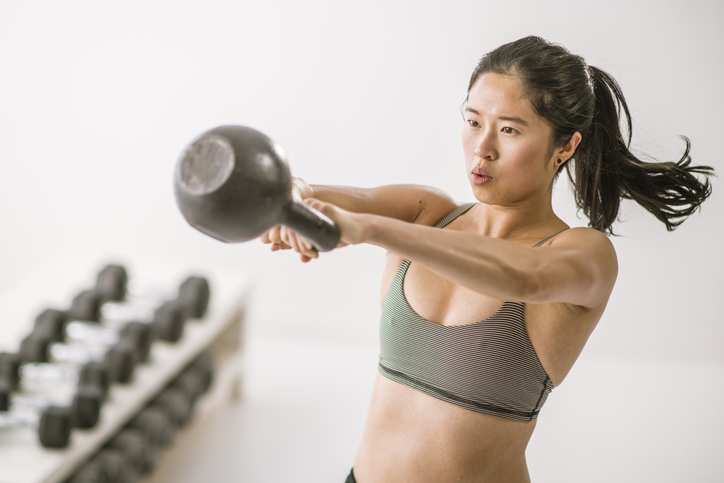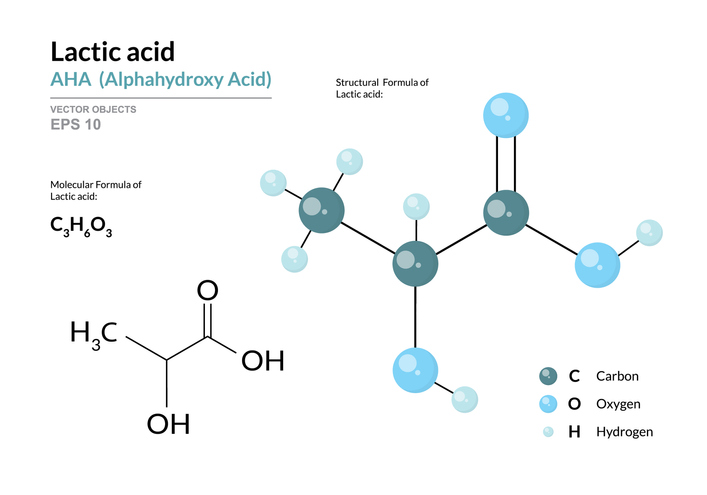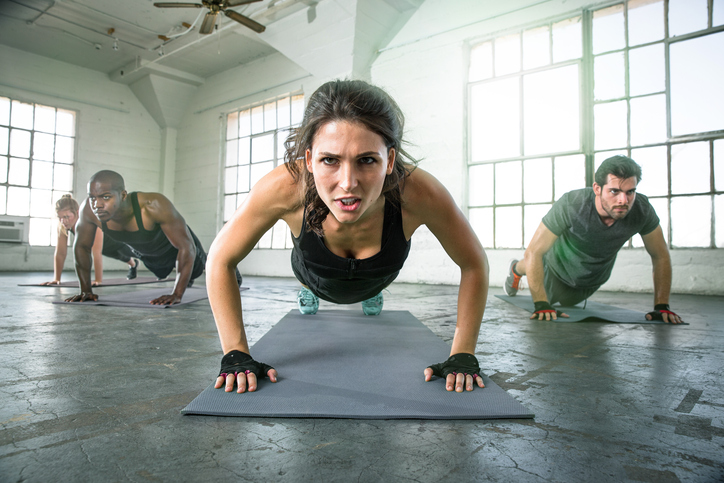Do You Need to “Feel the Burn” to Get Results?

Feel the burn! It’s a common refrain in fitness — as ubiquitous as reminders to pay attention to your breath or engage your core.
But what exactly is happening in your body when you “feel the burn” during exercise? And is it a sensation you should chase with every workout?
What Causes Your Muscles to Burn During Exercise?
The burning sensation you feel in your muscles — typically during high-intensity workouts — is caused by hydrogen ions, explains Paul Falcone, MS, senior scientist at BODi.
“Hydrogen ions are produced as a byproduct of turning fuel (macros like carbs and fat) into energy (ATP), which results in acid buildup that causes acute pain and soreness during exercise,” Falcone says.
This pain and soreness is what people are typically referring to when they talk about “feeling the burn.”
When Should You Feel the Burn?
Two people performing the same exact workout may feel the burn at different times, explains Jake Harcoff, MS, CSCS, TSAC-f, CISSN, certified kinesiologist and owner of AIM Athletic.
“When you start to feel the burn will be predicated on your body’s threshold for managing elevated levels of acidity,” he says. “An untrained person will likely ‘give up’ much sooner than someone who has trained for a longer period of time.”
Your body has a process for mitigating these hydrogen ions and preventing the muscles from becoming too acidic, Harcoff notes.
“The body releases another compound called pyruvate, which combines with the new hydrogen ions and forms lactate,” he says. “Lactate can then be recycled as energy for longer duration, low-intensity activity. This is why you will see a swimmer in the Olympics go directly from their race to another pool and swim slowly.”
Supplements like Beachbody Performance Energize — which contains the amino acid beta-alanine — may also help reduce or delay the burning sensation associated with high-intensity exercise, allowing you to work a little harder or get in a few extra reps.
“Beta-alanine increases levels of a molecule called carnosine, which is used by the body to buffer acids,” Falcone says. “Therefore, it plays a direct role in the body’s ability to mitigate acid buildup.”
However, he cautions, it might take up to a month for beta-alanine supplementation to make a noticeable difference in your workouts. “Continued consumption of beta-alanine [over a period of 28 days] has resulted in reductions in fatigue during exercise in clinical studies,” Falcone says.
Lactic Acid Build-Up During Exercise: What You Need to Know
You’ve probably heard someone attribute the uncomfortable burning sensation to “lactic acid build-up,” but that’s a common misconception.
Lactic acid is found in sour milk products. As mentioned above, the body produces the similar-sounding lactate.
But lactate isn’t what causes burning or fatigue. And while people may talk about “flushing out lactic acid” from their muscles, lactate is actually quite useful to the body.
Another phrase that can add to the confusion: lactate threshold. This is the point at which an intense workout goes from challenging to unbearable, and your lactate levels spike as your body tries to deal with the accumulation of hydrogen ions.
These hydrogen ions — the byproduct of intense exercise — are what increase acidity in the muscles and cause that deep burn.
Is DOMS a Result of “the Burn”?
Delayed onset muscle soreness (DOMS) and “the burn” are two different things.
While you feel the burn while exercising, DOMS typically occurs 24 to 72 hours after a workout. Both are caused by the same stimulus — intense exercise — but they don’t have much to do with each other physiologically.
“The burning sensation that happens during a workout is an indicator of the accumulation of metabolic byproducts and not of DOMS,” Harcoff says.
“DOMS results from small tears within the muscle sarcomeres [units comprising muscle fibers] that occur due to the increased tension created within the muscle during movement and has nothing to do with lactate or lactic acid (which, again, doesn’t exist in the body).”
Should You Feel the Burn to Get Results?
Just like sore muscles don’t necessarily indicate that you’ve had an effective workout, you don’t need to feel the burn to get results.
You can still increase muscle strength and grow muscle mass with exercise that does not cause a burning sensation. “Mechanical tension — and the ability to create lots of it — will inevitably be the indicator of how good your workout is, not the amount of burning that the exerciser feels,” Harcoff says.
However, the burn can be an indication that you’re pushing your limits, which is often desirable for experienced exercisers looking to make gains, overcome a plateau, or set new personal records.
“If you are accustomed to training, it can be a good thing, since it means that the targeted muscle is being challenged, which can lead to a stronger adaptive and rebuilding response,” Falcone says.
Should You Stop Exercising if You Feel a Burning Sensation?
You don’t need to feel the burn, but you also don’t need to fear the burn. It’s a natural occurrence that’s neither good nor bad.
That being said, the burn is a sign that you’re pushing your physical limits. Going too hard, too often, can increase your risk of of overtraining and injury — so make sure you follow a balanced program that includes adequate recovery time. If you’re just starting out, a trainer or coach can help you push yourself without overdoing it.
If what you’re feeling during a workout is less of a burning sensation in your muscles and more like a sharp pain, dizziness, or chest tightness, you should absolutely stop exercising, regardless of your level of experience, and seek medical help.








